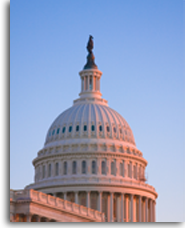Some insights from “‘He wants to take us back’: Democrats eye new strategy against Trump’s attacks on Harris: The former president’s attacks have proven to be effective in the past at sucking up the political oxygen” by Myah Ward and Megan Messerly at Politico:
It didn’t take long for former President Donald Trump to return to his well-worn playbook of resorting to attacks based on race and gender — familiar tactics he has used against political rivals, including in his 2016 campaign against Hillary Clinton.
But it’s not 2016 anymore, and Democrats assert that the lessons learned from Trump’s campaign eight years ago guide their strategy now: Respond aggressively, use his attacks to bolster the campaign’s message and don’t let them distract from the issues.
That thinking guided their response to Trump’s interview at the National Association of Black Journalists conference in Chicago on Wednesday, where he questioned Vice President Kamala Harris’ Black ancestry and suggested she was chosen for the job only as a “DEI hire.”
Her remarks followed a statement from her campaign that notably didn’t mention the specific examples of the attacks Trump directed at Harris, but instead decried his “hostility,” “personal attacks” and “insults” — “a taste of the chaos and division that has been a hallmark of Trump’s MAGA rallies this entire campaign.” It offered a preview of how Harris’ team might manage Trump attacks in the weeks and months ahead, as they work to define their candidate and her policy positions on a truncated timeline.
“You heard it very, very well from the vice president in her speech [Wednesday night]. She talked about it, she acknowledged it, she called it out for what it is, which is divisive,” said Christina Reynolds, the senior vice president of communications at Emily’s List who worked on Clinton’s 2016 campaign. “But she called it out, and then she used it to pivot to what it signifies. ‘He wants to take us back, I want to move us forward.’ And she talked about issues, and she talked about her vision. We can do both, and she proved it last night.”
Meanwhile, “Fatima Goss Graves, president and CEO of the National Women’s Law Center, said news organizations can’t become numb to Trump’s rhetoric….“It’s not enough to just treat this as a normal idea just because it is expected from Trump,” she said in an interview. “We have seen some media outlets in real time say, ‘oh these are harsh comments’ or ‘these are tough comments.’ But you also have to name them as to what they are — be clear that he is resorting to racist and sexist tropes.”
Ward and Messerly add that “Trump’s attacks have proven to be effective in the past at distracting and sucking up the political oxygen, often forcing his opponents to spend time on the defense instead of on the issues. This has been particularly true for women candidates and even more challenging for Harris, who faces attacks about her gender but also her identity as an Indian American woman and a Black woman. Earlier this week, for instance, Trump also defended running mate JD Vance’s description of Harris as a “childless cat lady.”
The Harris campaign’s strategy amplifies Trump’s contempt for accomplished women as a predictable and integral part of his efforts to disempower women throughout American society. By calling attention directly to his racism, the Harris campaign also hopes to show that Trump and Vance are devoted to enhancing polarization and division in America. The Harris campaign bet is that they can win over a critical mass of swing voters, who are not particularly liberal, but who don’t want to return to the angry polarization of the past.
Trump’s bomb-throwing is a distraction tactic that worked to some extent in the past. Harris’s response is a challenge to better reporters to not get suckered by Trump, to not merely amplify, but call out the Trump/Vance campaign’s backward-looking misogyny and racial animosity. Democrats hope to portray Trump as the political equivalent of the “Mayhem” character in the Allstate ads, a reckless proponent of destructive politics, who leaves ruin and chaos in his wake.
The subtextual question of the Harris campaign to self-described independents and any remaining swing voters is “Do you really want to follow a cowering party, dedicated to making America go back to all that division and animosity? Or can you envision a better future, in which Americans of all races, women, as well as men, can move forward and create a society of hope and opportunity for everyone?”



